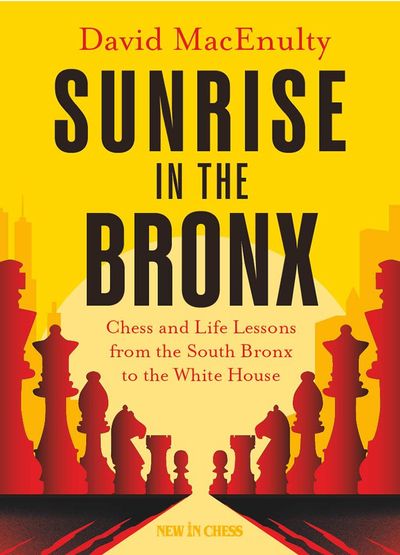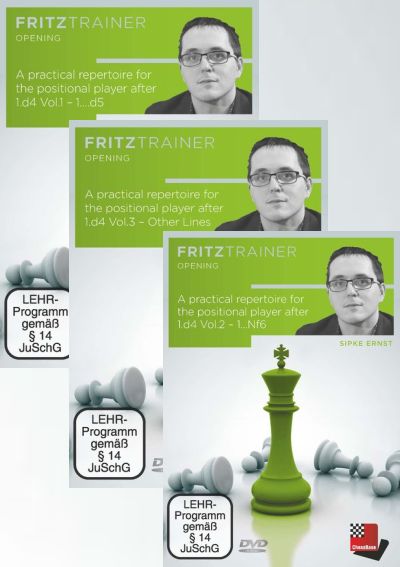Publisher: Thinkers Publishing, 2017, Pages: 231, Paperback
"Calculation training tools and decision making"
I met the author of this book for the first time at the Chess Olympiad in Turin 2006 and very soon our brief acquaintance transformed into intensive teamwork. Kuzmin worked as my coach for almost 10 years and after my professional career came to an end we remained good friends. When Alexey told me of his plans to write a book based on my games, I was a little puzzled. It was not a matter of doubt either in the precise choice of examples or in the quality of the analysis: during the years of our joint work my coach had been studying either my games, or my views on fighting, intensively. But based on our work together I knew Kuzmin as a chess player with a classical, fundamental approach to chess; it was no coincidence that he had formerly worked with Anatoly Karpov over the years. Many of the openings that I used, as well as many of my ideas, seemed much too risky to Alexey. Sometimes it required huge effort to convince him of my plans’ correctness. Nevertheless, he had often asked me after a game: “Could you somehow play calmly for “a small plus” instead of getting into almost uncontrollable complications?”
That’s why, when Alexey told me about “a manual”, the thought of “a positional play manual” had firstly popped into my mind. Of course, I have my own views on leading the strategic fight and I have always tried to show my notion’s viability in my games. However, the future author quickly calmed me down, telling me his book was to be a collection of tests from my games…
In his book, the author has managed to place all the collected material in a logical system, and his playful comments directed at the reader give the format of dialogue for checking the solutions. Quite often many tactics manuals don’t provide feedback for a reader, but in this case the given book is a pleasant exception: the interesting format for presenting the learning material makes this book more original. For example, the first chapter concurns only my game against Vachier-Lagrave — a game which I finally lost. We had been together, Alexey and I, at that tournament in Biel. I remember that after the game we were walking for a long time on the rather narrow streets of the Swiss town and talking a lot. It was my fourth tournament in Biel. I had managed to win the first three tournaments and wanted to repeat my success, but it didn’t work out — that time Vachier-Lagrave lifted the trophy…
I have to say that not all of my coach’s conclusions offered in this book seem to me to be indisputable. For example, to my point of view the similarity of my playing style to that of Mikhail Tal looks a bit exaggerated. Actually, throughout my career I have often and easily broken material balance: I have sacrificed pawns, pieces and sometimes all these together. However creating imbalance on the board and provoking complications and chaos aimed to confuse an opponent haven’t been my main goal. In the overwhelming majority of cases, having undertaken intuitive sacrifices, I frankly considered those continuations to be the strongest. And if later on some of them turned out to be not correct enough, they were the mistakes of my intuitive assessment of the arising complications. However, the author has the right to his own opinions and assessments, and as one says — ‘bystanders see more than players’…
In my childhood, having started to study chess seriously, I solved hundreds of diverse combinations and etudes. Through lack of both choice and internet capacity, I solved anything and everything which came to hand. As my skills improved, so too my notion of how to develop calculating abilities more effectively began to differ from those of the ‘recognized authorities’. I experimented a lot, looked for my own ways, so I could be fully satisfied with the result — as a rule I out-calculated my famous colleagues in my best games. Later on, having already become a grandmaster, during my preparation for tournaments I often solved tests and exercises chosen especially for coping with a concrete problem. It allowed me to bring my brain to the level of readiness needed for a serious fight and to develop my calculating abilities in a new spiral of advancement. However, at that time I didn’t put the pieces on the board, but rather solved positions from diagrams or blindfold as a rule. This method of preparation seriously helped me, especially when I had a long period without playing practice before a tournament.
I believe this book by Alexey Kuzmin to be useful for chessplayers aspiring to increase their calculating abilities and seeking to learn how to make optimal decisions faster. It will also be a pleasure for me if readers are interested in examining the fragments of my games with detailed comments by Alexey. Throughout my entire career I have been trying to play interesting fighting chess; complicated battles on the chessboard have always given me real pleasure.
Alexander Morozevich, Moscow, April 2017
 Excerpt
Excerpt


